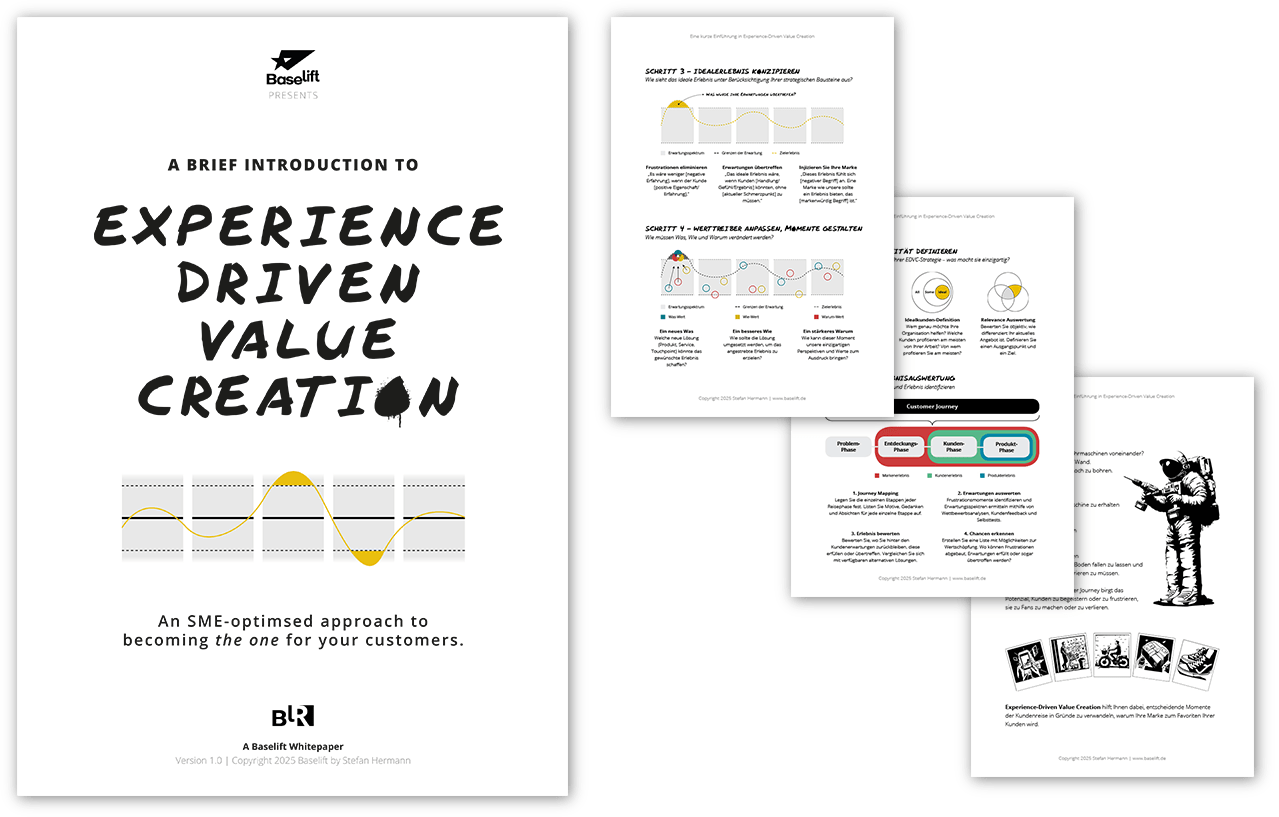This Is
Experience-Driven Value Creation
Large companies have dedicated marketing departments, integrated design teams and numerous innovation managers to achieve significant market differentiation.
Most small and midsize companies do not have this!
The result: your value creation strategy lacks the essential components to stand out in the market and become your customers‘ first choice.
Experience-Driven Value Creation helps you close these gaps.
What is Experience-Driven Value Creation?
Experience-Driven Value Creation (EDVC) is an approach to developing a differentiated value creation strategy.
EDVC blends the core principles of brand positioning, strategic design and experiential learning into a simple, actionable framework that helps leaders and managers steer their teams toward outstanding solutions.
Free Download
EDVC Whitepaper
A Brief Introduction to Experience-Driven Value Creation
Learn how to transform your unique skills and perspectives into a set of guiding principles that will make you indispensable to your customers.

Including:
- EDVC Principles
- Process Description
- Three Short Success Stories
Free Download
Get the full picture

Whitepaper: A Brief Introduction to Experience-Driven Value Creation
Learn how to transform your unique skills and perspectives into a set of guiding principles that will make you indispensable to your customers.
Including:
• EDVC Principles
• Process Description
• Three Short Success Stories
Need help?
If you would like to learn more about Experience-Driven Value Creation or need help implementing it, please contact us. We are here to help.
Stefan Hermann, founder Baselift



